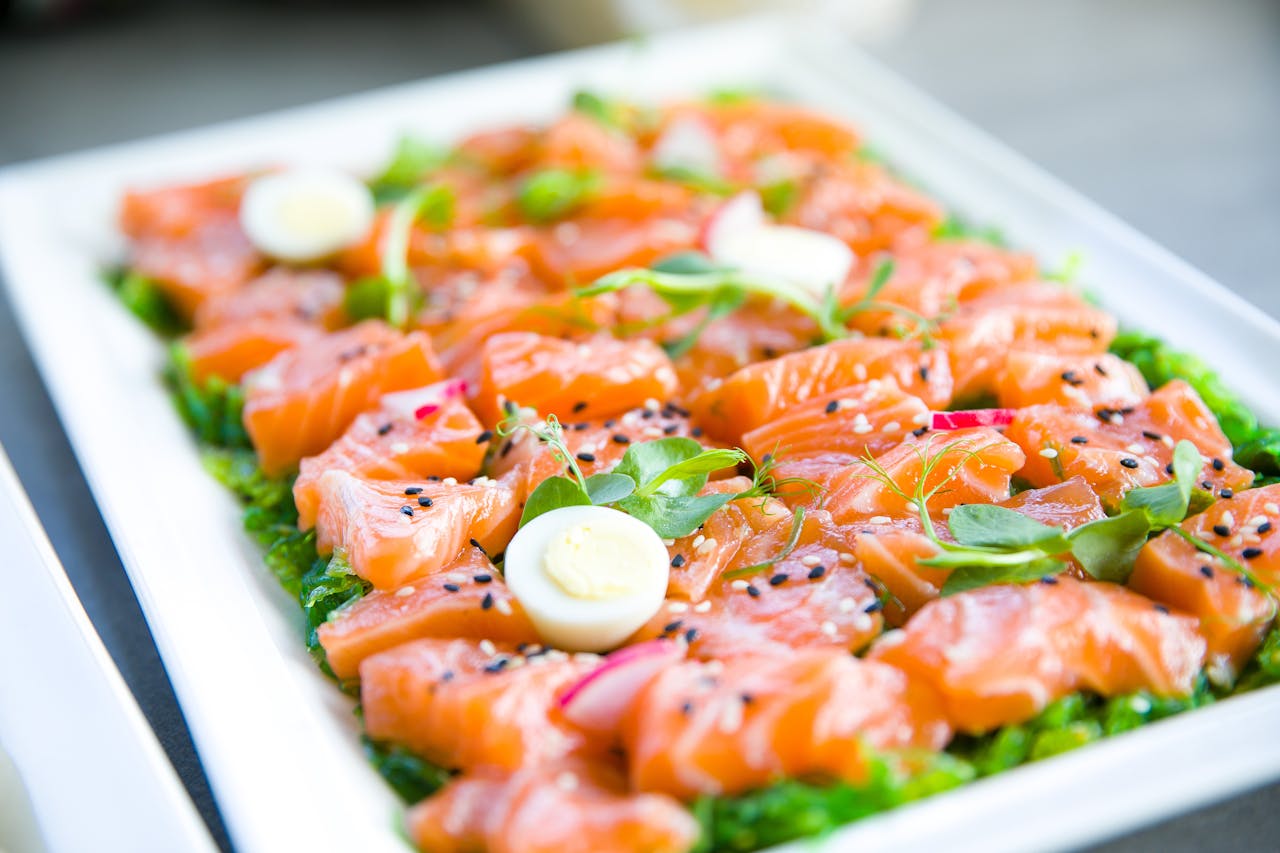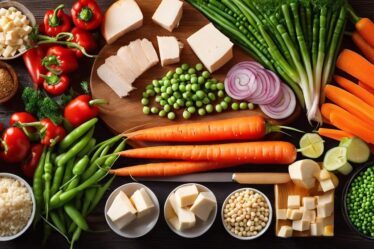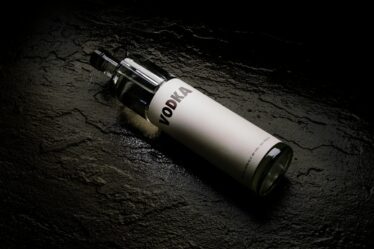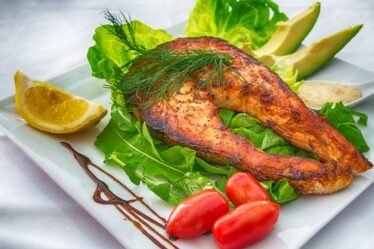
Salmon is a versatile and delicious fish that can be prepared in a variety of ways. Whether you prefer it grilled, baked, or pan-seared, salmon is a nutritious and flavorful meal option that is sure to please your taste buds. In this blog post, we will explore a delicious salmon recipe that is easy to make and packed with health benefits. From its high omega-3 fatty acid content to its potential to reduce the risk of heart disease, salmon is a nutritious choice for any meal.
Key Takeaways
- Salmon is a nutritious meal option that is high in protein and omega-3 fatty acids.
- To make a delicious salmon dish, you will need ingredients such as salmon fillets, olive oil, lemon juice, and herbs.
- Follow step-by-step instructions for cooking salmon, whether you choose to grill or bake it.
- Tips for perfectly grilling or baking salmon include using a meat thermometer and not overcooking the fish.
- Choose the best salmon for your recipe by looking for fresh, bright-colored fillets with firm flesh.
Why Salmon is a Nutritious Meal Option
Salmon is not only delicious, but it is also incredibly nutritious. One of the main health benefits of eating salmon is its high omega-3 fatty acid content. Omega-3 fatty acids are essential fats that our bodies need for optimal health. They have been shown to reduce inflammation, improve brain function, and even reduce the risk of heart disease. In fact, studies have shown that regularly consuming omega-3 fatty acids can lower blood pressure, reduce triglyceride levels, and decrease the risk of heart attack and stroke.
Ingredients Needed for a Delicious Salmon Dish
To make this delicious salmon dish, you will need the following ingredients:
4 salmon fillets
2 tablespoons olive oil
1 tablespoon lemon juice
1 teaspoon garlic powder
1 teaspoon dried dill
Salt and pepper to taste
Optional additional ingredients:
Fresh herbs, such as parsley or cilantro for garnish
Lemon wedges for serving
Step-by-Step Instructions for Cooking Salmon
| Step | Instruction |
|---|---|
| 1 | Preheat the oven to 400°F (200°C). |
| 2 | Season salmon fillets with salt and pepper. |
| 3 | Place the salmon fillets on a baking sheet lined with parchment paper. |
| 4 | Drizzle olive oil over the salmon fillets. |
| 5 | Bake the salmon for 12–15 minutes or until cooked through. |
| 6 | Serve with lemon wedges and fresh herbs. |
1. Preheat your grill or oven to 400 degrees Fahrenheit.
2. In a small bowl, whisk together the olive oil, lemon juice, garlic powder, dried dill, salt, and pepper.
3. Place the salmon fillets on a baking sheet or grill pan.
4. Brush the salmon fillets with the olive oil mixture, making sure to coat both sides.
5. Place the salmon on the grill or in the oven and cook for about 10–12 minutes, or until the fish is opaque and flakes easily with a fork.
6. Remove the salmon from the grill or oven and let it rest for a few minutes before serving.
7. Garnish with fresh herbs and serve with lemon wedges, if desired.
Tips for Perfectly Grilling or Baking Salmon
Grilling or baking salmon can be a bit tricky, as it has a tendency to stick to the grill or pan. Here are a few tips to help you achieve perfectly cooked salmon every time:
Make sure your grill or pan is well-oiled before cooking the salmon. This will help prevent sticking.
If grilling, preheat your grill to medium-high heat and oil the grates before placing the salmon on them.
When baking, line your baking sheet or pan with parchment paper to prevent sticking.
Do not flip the salmon too soon. Let it cook for a few minutes on one side before flipping it over.
Use a spatula or tongs to gently flip the salmon to avoid breaking it apart.
Cook the salmon until it is opaque and flakes easily with a fork. Overcooking can result in dry and tough fish.
How to Choose the Best Salmon for Your Recipe

When choosing salmon for your recipe, it is important to consider the type of salmon and its source. There are several different types of salmon available, including Atlantic, Pacific, and wild-caught. Wild-caught salmon is generally considered to be the best option, as it is less likely to be contaminated with antibiotics or other harmful substances.
When purchasing salmon, look for fillets that are firm and have a bright color. Avoid fillets that have a strong fishy odor, as this can indicate that the fish is not fresh. If possible, buy salmon from a reputable fishmonger or seafood market to ensure its quality.
Variations of Salmon Recipes to Try
While the recipe provided above is delicious on its own, there are many variations of salmon recipes that you can try. Here are a few ideas to get you started:
Asian-inspired: Marinate the salmon in a mixture of soy sauce, ginger, garlic, and sesame oil before grilling or baking.
Mediterranean: Top the salmon with a mixture of diced tomatoes, olives, capers, and feta cheese before baking.
Teriyaki: Brush the salmon with a homemade teriyaki sauce made from soy sauce, honey, ginger, and garlic before grilling or baking.
Cajun-spiced: Rub the salmon with a mixture of Cajun seasoning, paprika, garlic powder, and cayenne pepper before grilling or baking.
Sides and Sauces to Complement Your Salmon Dish
To complement your delicious salmon dish, consider serving it with a variety of sides and sauces. Here are a few ideas:
Roasted vegetables: Roast a medley of your favorite vegetables, such as broccoli, carrots, and bell peppers, to serve alongside the salmon.
Quinoa or brown rice: Cook up a batch of quinoa or brown rice to serve as a healthy and filling side dish.
Lemon dill sauce: Mix together Greek yogurt, lemon juice, fresh dill, salt, and pepper to create a tangy and creamy sauce for your salmon.
Mango salsa: Combine diced mango, red onion, jalapeno pepper, cilantro, lime juice, and salt for a refreshing and tropical salsa to serve with your salmon.
Health Benefits of Eating Salmon Regularly
In addition to being delicious, eating salmon regularly can have numerous health benefits. As mentioned earlier, salmon is rich in omega-3 fatty acids, which have been shown to reduce inflammation, improve brain function, and reduce the risk of heart disease. Omega-3 fatty acids have also been linked to a reduced risk of certain types of cancer, including breast and colorectal cancer.
Salmon is also an excellent source of high-quality protein, which is essential for building and repairing tissues in the body. It is also rich in vitamins and minerals such as vitamin D, vitamin B12, selenium, and potassium. These nutrients play a crucial role in maintaining overall health and well-being.
Conclusion and Final Thoughts on Delicious Salmon Recipes
In conclusion, salmon is a delicious and nutritious meal option that can be prepared in a variety of ways. Whether you choose to grill, bake, or pan-sear your salmon, it is sure to be a crowd-pleaser. From its high omega-3 fatty acid content to its potential to reduce the risk of heart disease, salmon is a healthy choice for any meal. So why not give this delicious salmon recipe a try and reap the many benefits it has to offer? Your taste buds and your body will thank you!
If you’re looking for a delicious and healthy seafood recipe, why not try this mouthwatering fish and salmon recipe? It’s the perfect dish for seafood lovers; it’s packed with flavor and nutrients. And if you’re in the mood for something sweet after your meal, check out this amazing 5-layer torte cake mastery article. It’s a must-read for all dessert enthusiasts, offering tips and tricks to create a stunning and delectable cake masterpiece. So go ahead and indulge in both savory and sweet delights with these incredible recipes!



